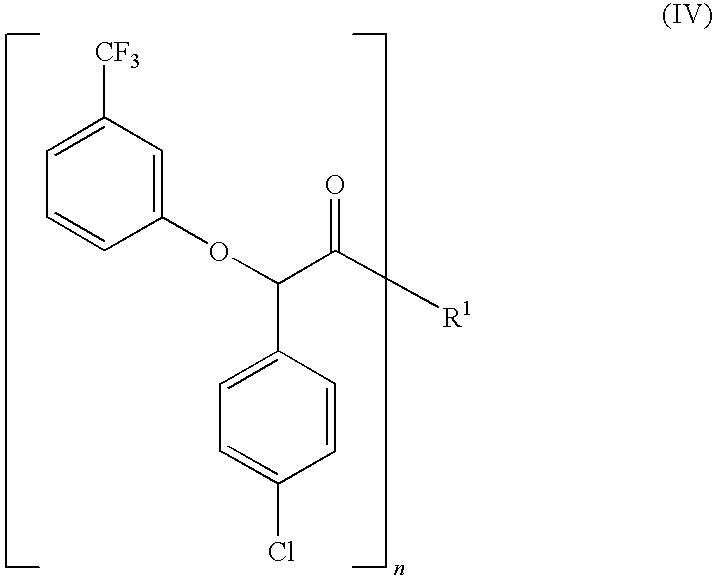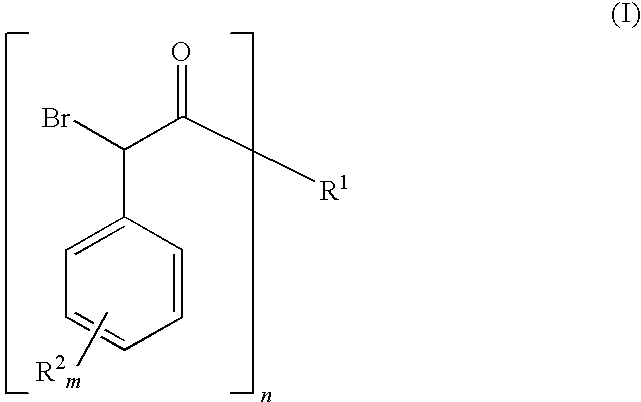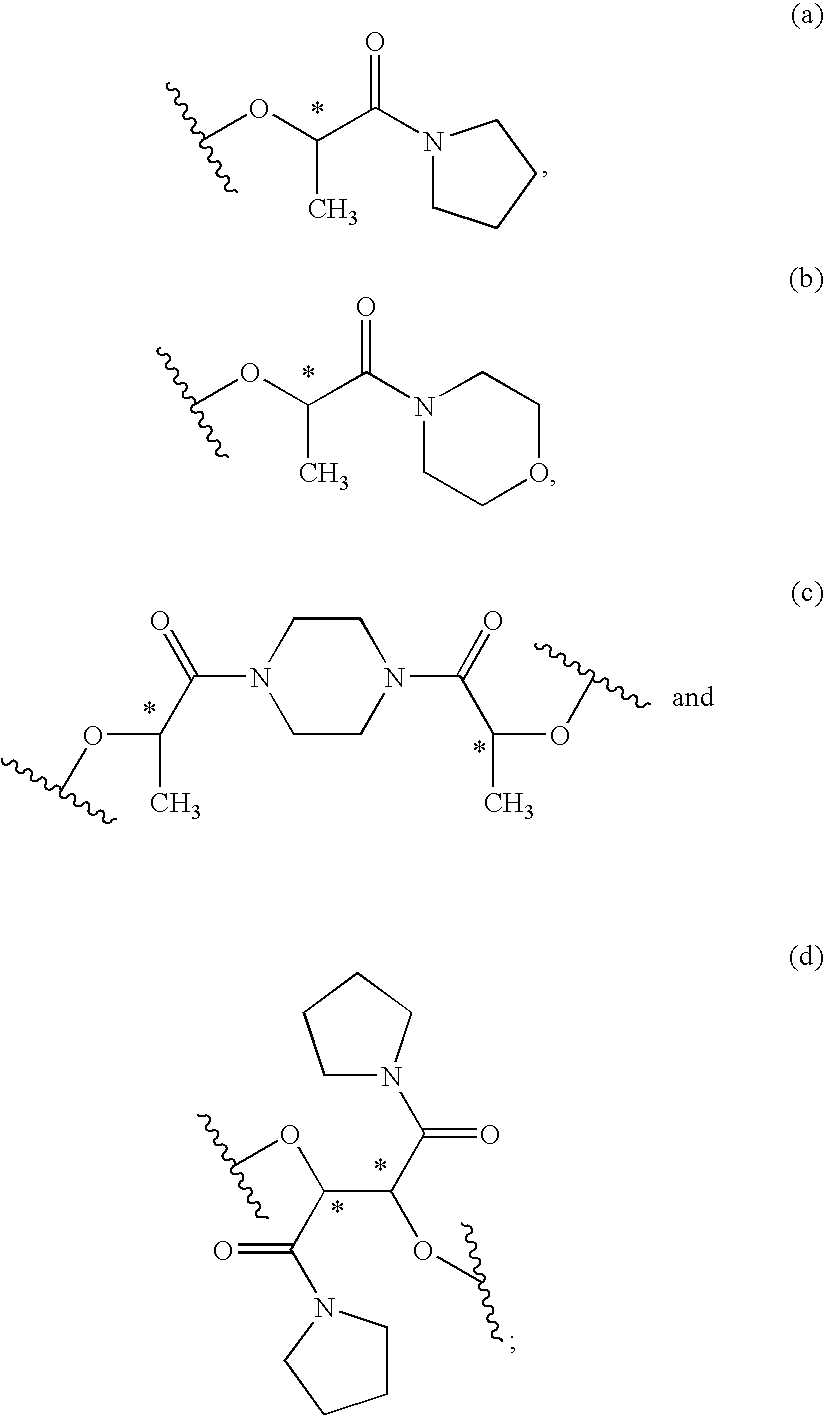Process for the stereoselective preparation of (−)-halofenate and derivatives thereof
a technology of halofenate and stereoselective preparation, which is applied in the field of stereoselective preparation of ()halofenate and derivatives thereof, can solve the problems of multiple isolation steps, complex structure, and difficulty in achieving high enantiomeric purity and high yield by known synthetic methods, and achieve high enantiomeric purity. , the effect of high yield
- Summary
- Abstract
- Description
- Claims
- Application Information
AI Technical Summary
Benefits of technology
Problems solved by technology
Method used
Image
Examples
example 1
Synthesis of a Chiral Alcohol Auxiliary
(S)—N,N-Tetramethylenelactamide (2)
[0111]Pyrrolidine (120 g, 1.69 mol; 2 eq.) was added dropwise to 100 g (0.847 mol) of ethyl (S)-(−)-lactate at 0° C. and stirred at room temperature for 3 days. After removal of excess pyrrolidine and resulting ethanol in vacuo, the oil residue was purified with distillation (104° C., 2 mmHg) to give 113 g (93%) of (S)—N,N-tetramethylenelactamide (2) as a pale-yellow oil. 1H NMR (CDCl3): δ 4.30 (1H, q, J=6.63 Hz), 3.74 (1H, br, OH), 3.31-3.61 (4H, m), 1.85-2.03 (4H, m), 1.34 (1H, d, J=6.24 Hz) ppm.
example 2
Preparation of (−)-Halofenate (6)
Preparation of Compound (3)
[0112]To a 2-L 3-neck flask under air, immersed in an oil bath and fitted with an addition funnel and a condenser was added 500 mL of anhydrous 1,2-dichloroethane, 4-chlorophenylacetic acid (174.04 g 98%, 1.0 mol (Acros)) of in one-portion, DMF (0.40 mL, ca. 0.5 mol %) in one-portion and thionyl chloride (95 mL, 1.3 mol, 1.3 eq.) over ˜1 minute. The resulting mixture was heated to 70° C. (oil-bath temperature) over 15 minutes. Vigorous gas evolution began approximately 5 minutes after heating (at ˜40-45° C.). The vigorous gas evolution slowed to a steady stream and then the gas evolution stopped. After stirring at 70° C. for 2 hours, bromine (80 mL, ca. 249 g, 1.55 mol; 1.55 eq.) was added to the resulting pale yellow solution (at 65° C.) over ˜1 minute to give a brown solution. The reaction was stirred at 80° C. to 85° C. (oil-bath temperature) overnight (ca. 18 hours) and then cooled to room temperature. This α-bromo acid...
example 3
Alternative Preparation of Halofenate (6)
[0116]To a solution of α,α,α-trifluoro-m-cresol (6.71 g; 0.041 mol) in anhydrous THF (20 mL) and toluene (30 mL) at room temperature was added lithium hydroxide hydrate (1.68 g, 40 mmol). The solvent was removed after 1 hr and the residue was dissolved in 30 mL anhydrous THF (30 mL). The resulting lithium phenoxide solution was added dropwise to a solution of bromide 3 (crude, 14.9 g; 0.04 mol) and NaI (0.3 g) in 100 mL of THF with stirring at room temperature for 1 h at −5° C. and for an additional 3 hr. at −5° C. to 0° C. 1H NMR showed the disappearance of bromide 3.
[0117]Hydrogen peroxide (Fisher 30%; 209 mL, 0.8 mol) was added to a solution of lithium hydroxide (4.2 g, 0.09 mol) in water (100 mL), and the mixture was stirred at room temperature for 20 min. This solution was then slowly added to a cold solution of lactamide 4 in THF at 0° C. The reaction was stirred at 0-4° C. for 1 hour, quenched with 1N HCl and adjusted pH to 2. THF was ...
PUM
| Property | Measurement | Unit |
|---|---|---|
| temperature | aaaaa | aaaaa |
| enantiomeric excess | aaaaa | aaaaa |
| enantiomeric excess | aaaaa | aaaaa |
Abstract
Description
Claims
Application Information
 Login to View More
Login to View More - R&D
- Intellectual Property
- Life Sciences
- Materials
- Tech Scout
- Unparalleled Data Quality
- Higher Quality Content
- 60% Fewer Hallucinations
Browse by: Latest US Patents, China's latest patents, Technical Efficacy Thesaurus, Application Domain, Technology Topic, Popular Technical Reports.
© 2025 PatSnap. All rights reserved.Legal|Privacy policy|Modern Slavery Act Transparency Statement|Sitemap|About US| Contact US: help@patsnap.com



